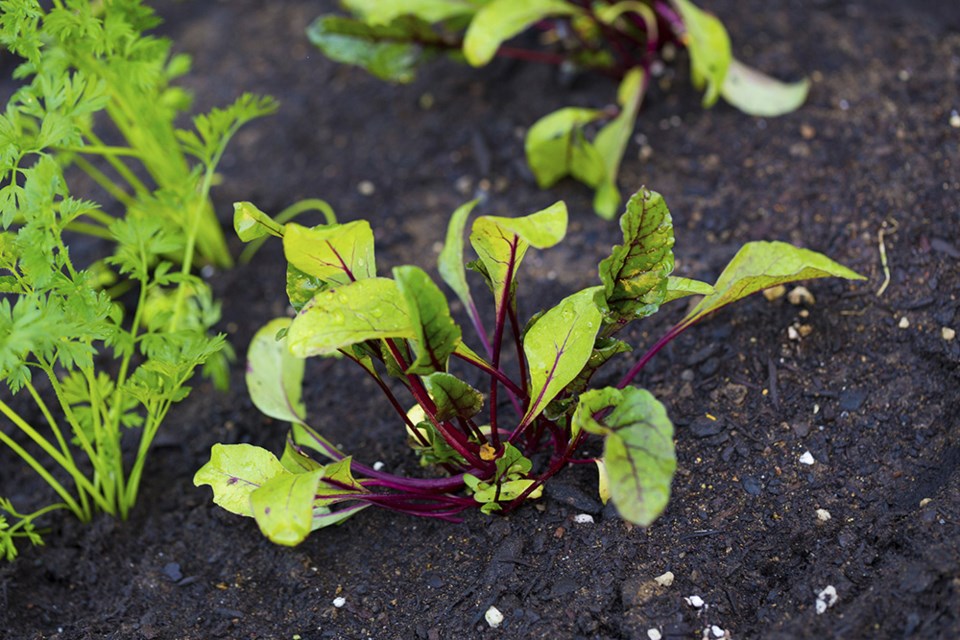Pleasant night temperatures and warm June rains make perfect planting weather, even though we may have to dash out between showers to get anything done. It’s good to reflect that late plantings tend to catch up to earlier ones.
June and early July is perfect timing for planting beets, but the July sowings should be varieties that can stand into winter. The large heritage beet Lutz (also known as Winterkeeper) is one of these hardy ones, though the roots last longest when mulched.
Parsnips can be direct-sown outside now. Parsnips are so frustrating because they’re very reluctant germinators. You’ll need to plant twice more seed than you would for any other root crop. The other challenge is finding people that like them.
Carrots can be planted through April right into the beginning of July. Gardeners who’ve had problems with the little brown tunnels of the carrot rust fly might try the partly resistant varieties such as Flyaway or Resistafly.
There seems to be less carrot fly damage when carrots are grown close to garlic – and since garlic can be harvested without huge disruption of the soil, the two crops are good companions.
For container gardeners, salad crops are very easy to handle, especially the leafy plants where slugs can be such a problem in the open garden. Copper barriers are easy to apply on containers and last for several years.
Scallions (green onions), radishes and Cos or Deer Tongue type lettuces fit especially well into containers because their tall and narrow growth takes up very little space.
Planting in sequence, just a few seeds every week is the best way to organize salad crops – and some herbs, such as dill. People who love salads would enjoy having the peppery-leaved annual nasturtiums in their salad garden.
The transplants that some gardeners started earlier in the year and that other gardeners get from garden centres can all be planted outside now. This includes, kale, brussels and broccoli.
Any cabbages remaining from the previous year will flower and produce seed in spring. The flowers from kale and brussels sprouts can be eaten when they’re still in bud. But if you leave them, the buds open into masses of small yellow flowers, which last for weeks and attract clouds of pollinating insects.
June is the time to plant bush beans and pole beans. People with large gardens might plant pole beans in rows with cross poles tied to central horizontal ones. Smaller space gardeners could plant pole beans in teepees.
These need to be very sturdy and planting no more than two bean seeds per pole is safest. It’s hard work to re-erect a fallen trellis that’s already covered with bean plants.
Squash and zucchini can be sown or transplanted outside now. It’s best to leave cucumbers and pepper transplants until mid-June. Peppers should always be transplants because they’re very slow from seed.
Any time now, tomatoes can be planted outside. Most are best grown under cover to protect them from late blight. Tomatoes need lots of food and water.
Since the whole length of stem can produce roots, you end up with sturdier plants if you plant tomatoes sideways with only the top peeking above ground.
Anne Marrison is happy to answer garden questions. Send them to her via amarrison@shaw.ca. It helps if you add the name of your city or region.



